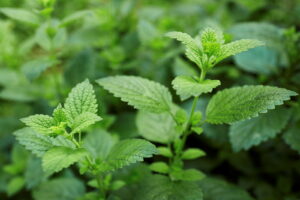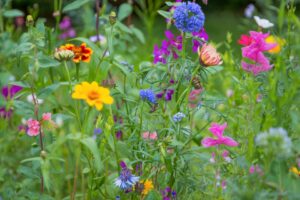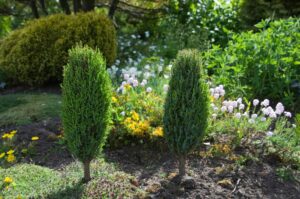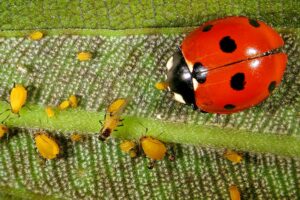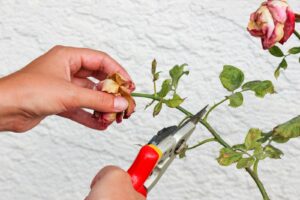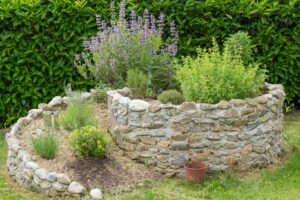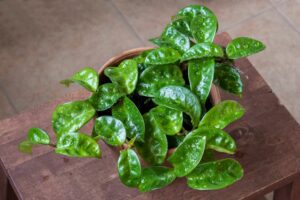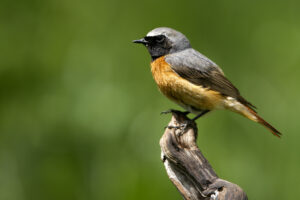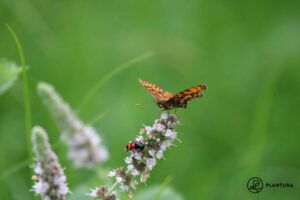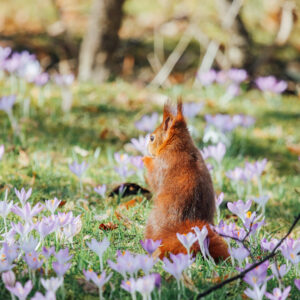Chickweed: identification, benefits & how to get rid of it
Chickweed is often mistaken for a useless weed – but in fact it is an edible, medicinal and extremely useful plant in your garden.
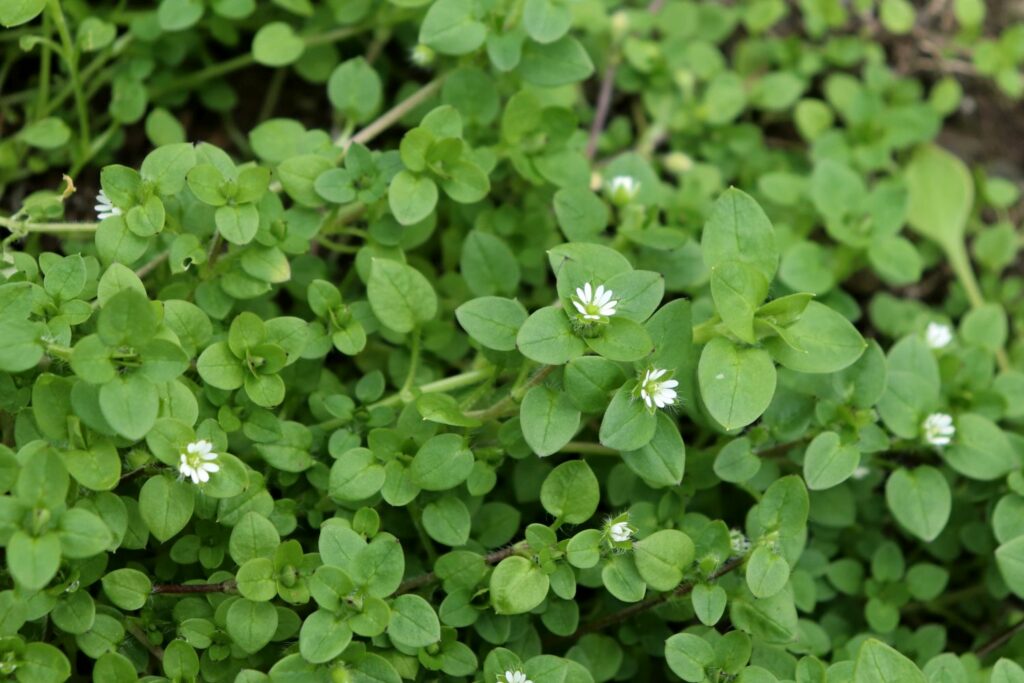
Almost every gardener is familiar with common chickweed (Stellaria media), also known as winter weed, white bird’s eye and chickenwort, among other names. This inconspicuous plant spreads rapidly across veg patches and lawns, annoying many gardeners along the way who spend hours trying to weed them out. Few, however, are aware of the many benefits of chickweed: the plant is not only edible, but also has healing properties and can be extremely useful in the garden. In this article you will learn how to identify chickweed and how to use it.
Contents
Identifying chickweed
The chickweed is so delicate and inconspicuous that it is often easy to miss. However, if you look closely, you are sure to find the herb in your garden. Common chickweed can adapt to all kinds of environments, so it is found all over farmland, in gardens, parks and along paths. To identify chickweed, there are a few tell-tale features to look out for: for example, chickweed grows densely to about 10 to 40cm high, creating a carpet like effect. Chickweed flowers all year round in milder temperatures, forming lots of small, white flowers which only open in good weather. You can also identify chickweed from its small, oval leaves that sit in pairs opposite each other on the thin, soft stems of the plant. The stems are also slightly furry, with a line of soft hairs extending down one side.

Where does Chickweed grow?
- Found throughout the UK
- Widespread across arable land, in parks, gardens and on paths
- Grows best in nitrogen-rich and moist soil
- Survives both in sunny and shaded locations
What does chickweed look like?
- Grows to a height of between 10cm and 40cm
- Forms a carpet of leaves
- Numerous small, white flowers that can be seen all year round in good weather
- Small oval leaves that grow in pairs opposite one another
- Thin white lines of stem hair
Easy to confuse: Unfortunately, when picking chickweed, it can be easily confused with other wild herbs. It is particularly common to confuse it with other types of chickweed such as water chickweed (Stellaria aquatica) or wood stitchwort (Stellaria nemorum). Fortunately, there is no need to worry about making this mistake, as both of these types are also edible, even if they don’t taste as good as the common variety. The scarlet pimpernel (Anagallis arvensis) is often called red chickweed: this primrose plant is actually slightly poisonous and if eaten can cause headaches, nausea and circulatory problems. However, especially during the flowering season, scarlet pimpernel is easy to distinguish from chickweed because it has orange flowers instead of white, and has no thin hairline on its stems.

What to do with chickweed: is chickweed edible?
For a long time, chickweed was considered a useless weed, but recently its culinary possibilities have been discovered and is now even used in Michelin star restaurants. Chickweed can be used as a replacement for herbs in herb butter or pesto. Or alternatively, it makes a delicious salad or even a green chickweed smoothie. It is mostly eaten raw but also is nice steamed as a substitute for spinach. This green plant is also extremely healthy as it is packed with essential vitamins and minerals such as vitamin A, potassium, phosphorus, copper, and silicic acid. On top of that, chickweed is very rich in Vitamin C with just 50g of chickweed covering a person’s entire daily requirement. Chickweed also contains the ingredient aucubin, which is said to have a positive effect on the immune system and slows down the ageing process. The herb is well known in naturopathy for its health-promoting effects and is used to treat a variety of illnesses such as rheumatism, respiratory infections and bladder diseases. Chickweed tea is a particularly popular home remedy. For this, brew one tablespoon of dried chickweed with 250ml of boiling water and let it sit for five to eight minutes.
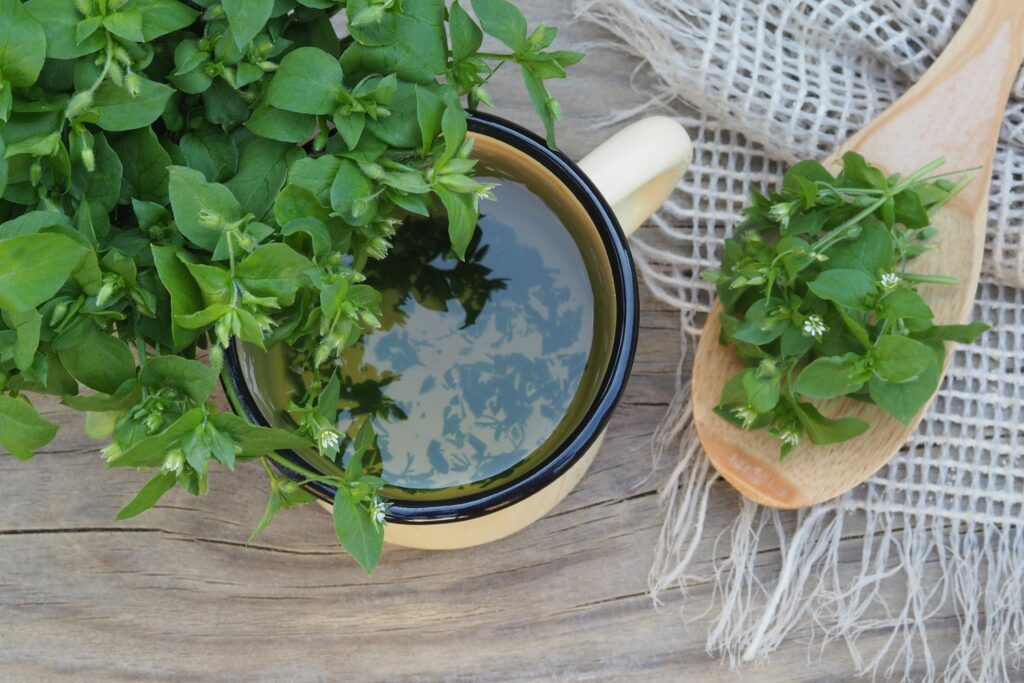
Chickweed is also a useful addition to gardens. As its name suggests, birds are particularly fond of the plant. The seeds are a valuable food source for a variety of birds. In fact, chickweed was a popular chicken food, whilst also providing a nutritious snack for domesticated birds such as budgies. Growing chickweed in gardens is also beneficial in maintaining healthy soil because its effective ground coverage protects the soil from drying out or being washed away. As the plant is particularly persistent and winter-hardy, it is also suitable for planting in winter beds.

Planting chickweed
If you want to grow chickweed in your garden, it won’t require a lot of work or care. This robust herb can grow almost anywhere and needs virtually no attention. The plant grows in both full sun and partial shade, and when it comes to soil, the plant likes nitrogen-rich sites. If your soil is particularly low in nitrogen, it is therefore advisable to improve the soil accordingly with compost, bone meal or an organic fertiliser with long lasting effects, for example our Plantura All Purpose Plant Food. If you do not already have chickweed in your garden, you can simply collect seeds from plants growing in the wild. Then simply direct sow the chickweed seeds into a bed. Cover the seeds with about 5mm of soil and water well. Do this during the growing season between March and the end of September.

Cultivating and caring for chickweed is simple. The most important aspect of care is to make sure that the plant has plenty of water during hot summers. Chickweed is very prolific and can spread quickly in flower beds. To prevent self-seeding, cut the plant back before it produces seeds.
Chickweed can be harvested all year round. To do this, cut off either the young shoot tips or the entire plant to about 2 to 3cm above the soil surface. The lower stem and roots of the plant that are left in the ground will regrow and can be harvested again a few weeks later. Chickweed is best used fresh, but it can also be dried or frozen.
Grow chickweed in your garden
- Place in sun or partial shade in either a pot or garden bed
- Nitrogen-rich, moist soil
- Sow the seed from March to September
- Broadcast sow seeds, cover with 5mm of soil and then water
- Water during dry weather
- You can harvest all year round

Tip: If you don’t have a free patch in your garden, you can cultivate chickweed in a pot either outside or on a windowsill. A nutrient-rich potting soil such as our peat-free Plantura Organic All Purpose Compost is perfect for this.
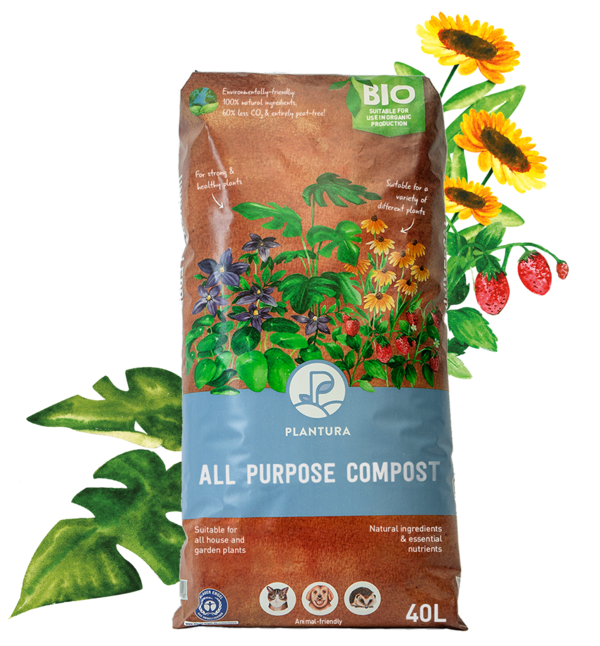
- Perfect for all your house, garden & balcony plants
- For strong & healthy plants as well as an active soil life
- Peat-free & organic soil: CO2-saving composition
How to control chickweed?
Even though chickweed has many benefits in gardens, it can sometimes spread to areas where it becomes a nuisance. To keep it from growing out of control you have several options:
Weeds such as chickweed can be removed gently by the tried and tested method of weeding. When weeding, it is important to make sure that you remove the whole plant along with its roots.
Because chickweed has shallow roots, hoeing is another option to work the soil and dislodge the weeds, which can then be left on the ground or on paths to dry out.
Tip: Alternatively, you can collect the chickweed removed during hoeing or weeding for your own consumption, put it on the compost or leave it for birds. In any case, it is extremely important to remove the plants before they flower in order to avoid the seeds from spreading.
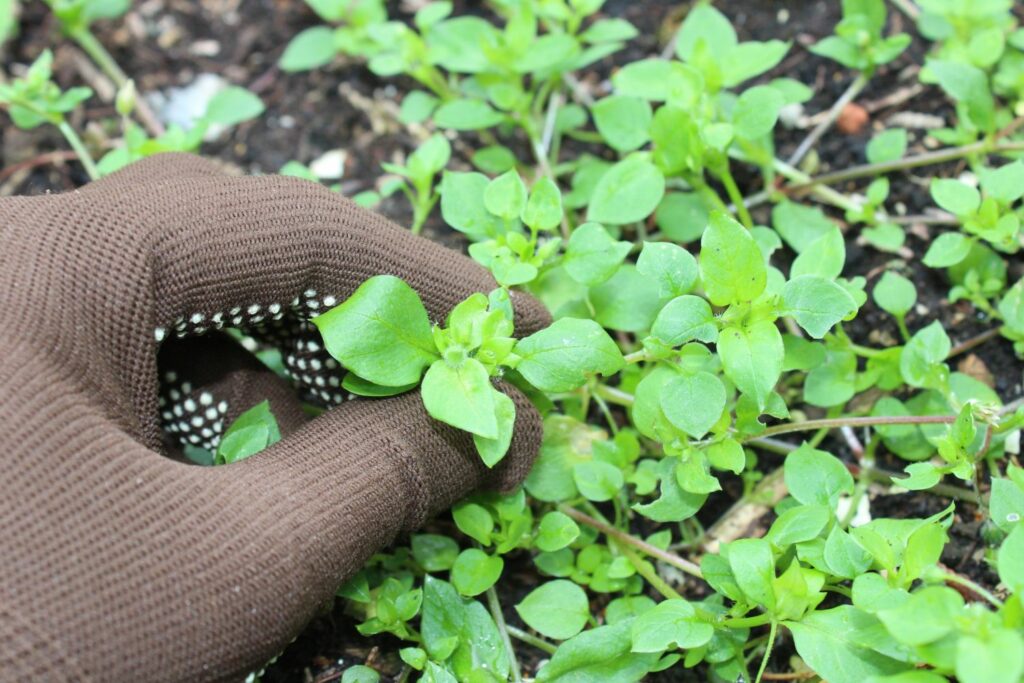
As weeding can be quite tiresome, there are other methods to help reduce how much you have to do. A tried and tested method to avoid chickweed taking over your garden is by depriving it of the required conditions. This can be done in two ways: Firstly, it likes to grow in gaps in the garden, which can be closed by other plants. For example, ground cover plants are ideal as they grow in the shade. If planting ground cover is difficult, you could put down a layer of mulch between plants in vegetable beds, to reduce weed pressure and minimise the growth and spread of chickweed.
If chickweed appears on your lawn, scarifying and regular mowing can help. While weeding is a good way to capture the plant and pull it out of the ground, regular mowing prevents chickweed from flowering, which suppresses the further spread of the plant. Gaps in the lawn caused by chickweed should be filled as quickly as possible, for example with our Plantura Lawn Repair Mix, so that no new chickweed can settle there.
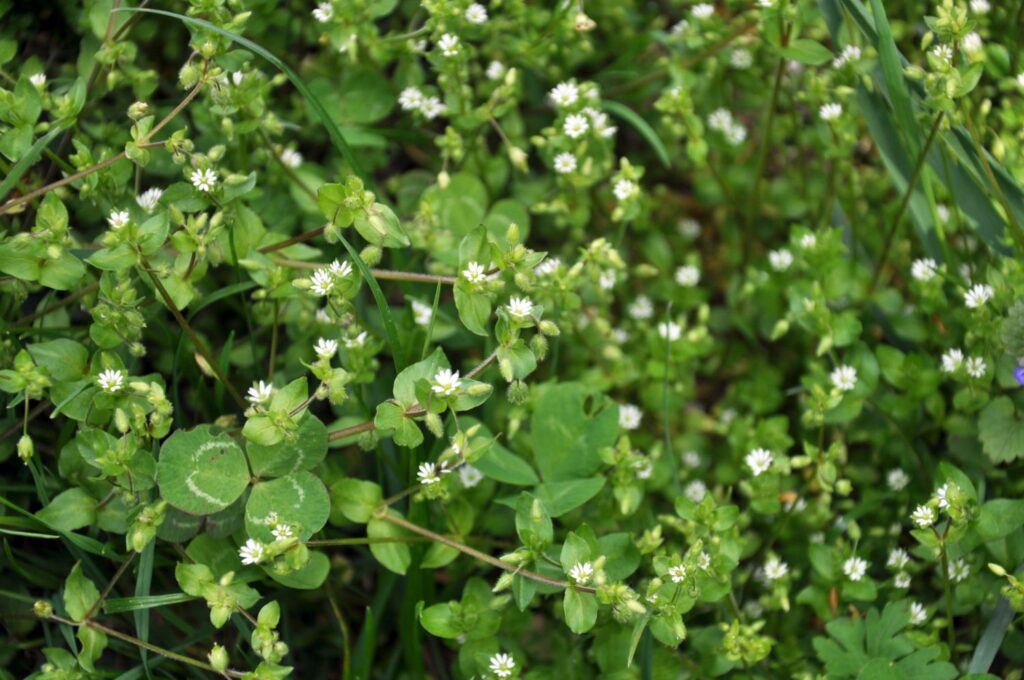
How to get rid of chickweed?
- Regularly weeding or hoeing beds
- Close gaps in beds with ground cover
- Cover gaps in beds with mulch
- For chickweed on the lawn: Scarify and mow the lawn. Re-seed gaps as soon as possible
Want to discover more weird and wonderful vegetables for your garden? Here you will find all you need to know about the little-known but absolutely delicious strawberry blite.


